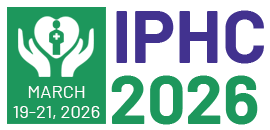Title : The embodied nature of stress reduction: Exercise, body schema, HPA axis
Abstract:
Over one in five US adults experience mental illness yearly with the highest prevalence being among young adults and women. Common first-line treatments of anxiety disorders include pharmacotherapy, psychological interventions, and transcranial stimulation. Given the limitations of such brain/cognitive-oriented therapies (e.g., associated medical costs, adverse effects, treatment resistance, limited evidence based on rigorous interventions, short-term effects, and high relapse rates), it is important to examine the embodied nature of stress reduction. Therefore, the purpose of this concept-based paper and mini review was to analyze how different exercise programs (e.g., challenging endurance training and holistic body-mind movement exercises) modulate the hypothalamic-pituitary-adrenal (HPA) axis via improvements in body schema (motor habit or habitual body). A critical narrative review was conducted for the effects of exercise on the HPA axis among healthy adults. This paper was based on Merleau-Ponty’s philosophical underpinnings of embodiment, whereby body and mind act in unison for health and well-being. Instead of viewing mental health only linearly (unidirectional stimulus-response model from brain to body), in this paper an embodied approach is embraced, in that a balanced body schema can holistically strengthen the HPA axis resilience for stress reduction. The function of the HPA axis does not involve only linear stimulus-response pathways (e.g., stimulation of the adrenal cortex via the pituitary gland); rather, it is regulated via improvements in body schema (embodied consciousness), which connects in-itself (e.g., cortisol secretion) and for-itself (e.g., perceptions and breathing techniques) body structures for the healthy functioning of the human organism. Public health officials need to advocate for holistic, physically challenging, and long-term exercise programs to reshape body schema and thus holistically modulate the HPA axis for health and wellness.



